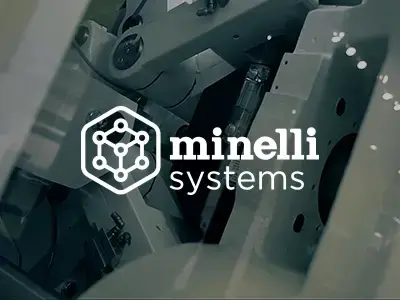 In the world of environmental sustainability and wood product manufacturing, bamboo is often praised as an ecological resource, boasting rapid growth and low water consumption. This perception, however, masks a more complex reality, full of challenges and problems that deserve attention. In today's article, we explore the lesser-known and often overlooked aspects of bamboo object production.
In the world of environmental sustainability and wood product manufacturing, bamboo is often praised as an ecological resource, boasting rapid growth and low water consumption. This perception, however, masks a more complex reality, full of challenges and problems that deserve attention. In today's article, we explore the lesser-known and often overlooked aspects of bamboo object production.
The dark sides of bamboo in wood product manufacturing
Bamboo, a fast-growing and resilient plant, has gained worldwide fame as a symbol of sustainability. Its ability to grow quickly without the need for fertilizer or large amounts of water makes it an environmentally friendly alternative to traditional materials.
These characteristics have led bamboo to be widely celebrated as an eco-friendly solution, especially in industries such as construction, fashion, and household goods. However, as with any resource, there are hidden sides and complexities that often escape public attention.
From the environmental impact associated with its transport over long distances to the reality of monoculture practices, from the chemical risks associated with production to the ethical and environmental implications, various aspects lurk behind bamboo's façade of sustainability.
Let's look at them below.
1. The carbon footprint problem
Bamboo, while lauded for its rapid growth and lower resource requirements, faces the significant problem of carbon footprint in its production. This problem emerges mainly because of China's centrality in bamboo production, which controls 70 percent of the world's resources. As a result, bamboo products must travel long distances to reach global markets, thus increasing the carbon footprint associated with their transportation. This reality contradicts the eco-friendly image of bamboo, as the environmental impact of transportation can cancel out the benefits of its sustainable growth properties.
For an accurate assessment of the sustainability of any type of wood, it is therefore essential to consider the entire life cycle of the product, from cultivation to consumption.
The way wood is sourced and processed is crucial to understand if the wood maker really offers eco-friendly products.

2. The risks associated with monoculture
Monoculture of bamboo, while efficient for its cultivation, carries significant environmental impact. This farming practice requires large areas, often obtained by clearing ancient forests, leading to loss of biodiversity and destruction of crucial habitats for wildlife, including pandas. In addition, monoculture makes bamboo plantations more vulnerable to fungi and bacteria, requiring the use of pesticides with additional harmful effects on the environment.
These factors contradict the eco-friendly image of bamboo and raise questions about its overall sustainability.
In recent years, there has been a growing attention to sustainable wood harvesting practices, thanks to a variety of guidelines and regulations. Certifications like the FSC and the PEFC emphasize the importance of worker safety, efficient forest management, and minimizing waste. Moreover, the adoption of innovative technologies by forward-thinking companies has greatly reduced the environmental footprint of wood product manufacturing.
3. Transparency and regulation
Agricultural and environmental regulation in China, which dominates the bamboo market, has significant gaps. These regulatory deficiencies make it difficult to monitor the use of pesticides, herbicides, and fertilizers in bamboo plantations. The absence of effective monitoring can lead to the use of chemicals that are harmful to the environment and human health. In addition, these shortcomings prevent ensuring the sustainability of cultivation practices, creating concerns about the environmental impact and safety of the finished products.
To ensure truly sustainable and safe production of bamboo, it should be essential that China implements and enforces stricter and more transparent agricultural and environmental regulations.

4. Problems with the use of glue
The production of bamboo items often involves the use of adhesives that contain melamine formaldehyde, a substance known for its potential harmful effects, such as skin and eye irritation, endocrine and lung problems. These toxic substances can be released more rapidly under high temperatures or in contact with acidic foods, common situations in products such as bamboo cutting boards.
This raises serious questions about the safety of bamboo products, especially in the absence of effective control of the production chain, particularly in countries with deficient regulations such as China.
Transparency is one of the most important points to consider when evaluating a company’s reliability. It means disclosing all the important information about its products, sourcing of its materials, how the company is managed, and what it does to lessen the environmental effect.
5. Chemical risk and nonconformity
The RAPEX database search revealed significant concerns about the safety of wood products coming from the Far East (China, Thailand, Vietnam, India). Of 75 products analyzed, 45 had chemical hazards and came from this region. A major concern is the high level of formaldehyde, often exceeding the limits allowed by European regulations.
In addition, problems were found with paint and chemical additives such as phthalates and lead.
These data highlight the need for tighter control and greater transparency in production and import practices, underscoring the importance of improving regulation and control of imported wood products to ensure safety and compliance with European requirements.

Besides FSC and PEFC certification, there are other regulations a wood manufacturing company should comply with:
- EUTR 995 was introduced in 2013 to control operators and traders that place wooden products on the European market. Its aim is avoiding the circulation of illegally harvested timber, ensuring stronger monitoring of the supply chain.
- The Lacey Act is very similar to EUTR 995 but is valid for trade in the United States.
- REACH (EC 1907/2006) is a European Union regulation that aims to protect human health and the environment from potential risks caused by chemical substances.
6. Mismeasurements and quality
Extending the analysis to problems of inaccurate measurement, other risks emerge that should not be underestimated. Undersized parts that break and sharp parts that can cause injury are just a few examples. These problems highlight the importance of choosing reliable and accurate suppliers that ensure co-design service and strict quality controls in wood product manufacturing.
Minelli offers significant added value through its codesign service, which ensures properly designed and sized products, reducing the risk of undersized and fragile parts. Minelli's precision machining prevents defects such as splinters, ensuring safety, especially in products intended for children. In addition, rigorous quality controls ensure that each product not only meets but exceeds required safety and quality standards.
Relying on a supplier like Minelli means choosing safety, quality and compliance, essential aspects in a global market where the risks of nonconformity are high.
In conclusion, while bamboo may offer some environmental advantages over other materials, it is critical to consider the entire life cycle and manufacturing processes. Only then can we ensure that the choices we make in the name of sustainability do not have unintended and harmful consequences. The bamboo industry, like any other industry, requires transparency, strict regulation, and an ongoing commitment to more sustainable and safe practices.
If you need more information, please do not hesitate to contact us: our experts are at your complete service!







